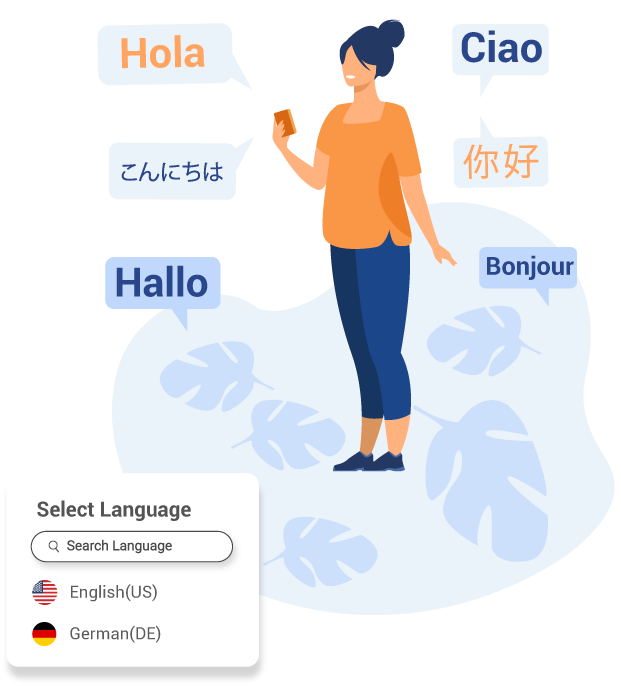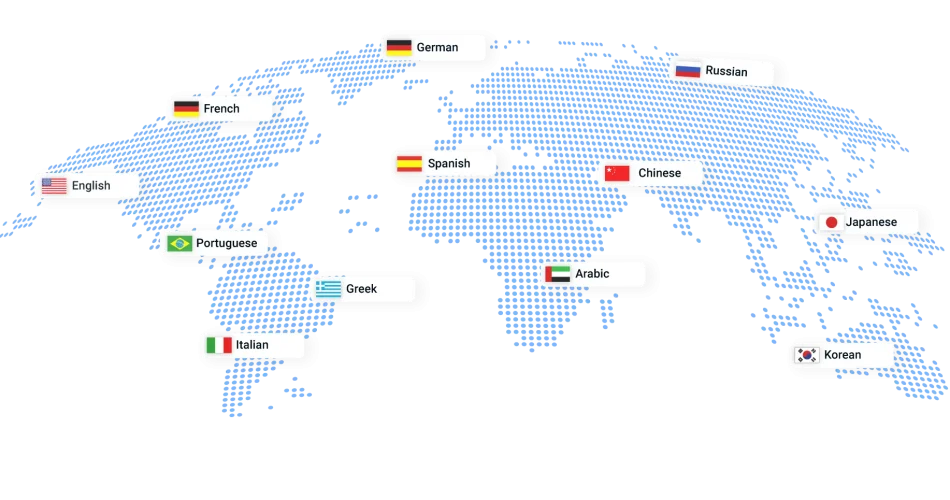Did You Know That Translation Is A Complicated Process? Technical Experts Disagree On The Best…
Create a Translation
Desource Translation is a Professional Translation Services provider
We connect you with certified translation specialists and interpreters in over 100 languages. Get certificates of accuracy for free. Live support 24/7.
The ONLY Native-Verified Translation Service You Need!
Selecting the perfect translation partner is hard! And it is getting harder when you want to enter a region that you don’t have any cultural background on it. We get your concerns, and our aim is to transform your doubts with assurance. Fear not! Desource Translations is your steadfast partner in all your language service requirements.
In our endeavor to provide top-notch services, we adhere to rigorous quality standards across all our language offerings. This includes:
The Power of Human Interaction
Communication is deeply personal, and we fully recognize that. Your words carry a unique essence, a personal touch that we strive to maintain. From the moment your project begins until it reaches completion, human expertise guides every step. Your documents are meticulously translated and meticulously approved by our experienced linguists. Desource Translation ensure your words retain their original spirit, even as they transcend language barriers.
Superior Professional Translation Services
Mistranslations are more than just embarrassing—they can result in significant financial loss. A single misinterpreted word could potentially cost you millions! That’s why we’ve developed an advanced 5-step process that positions us as the industry’s gold standard in translation accuracy. This robust process not only ensures unparalleled precision but also aids in reducing your costs, proving that quality and affordability can indeed go hand in hand.
A Dependable Translation Partner
Your words are invaluable, and we recognize the need for them to be treated with extreme care. You can’t trust just anyone with such a critical task. Desource Translation take this job very seriously! Further, our service offerings have gained the trust of the world’s leading corporations. We make a solemn promise to safeguard your trust, treating your words with the reverence they deserve.
Round-the-Clock Convenience and Adaptability
We realize that in this high-velocity world, you need solutions that align with your schedule. Therefore, we extend services 24/7, always set to send and accept paperwork, handle transactions, and offer customer aid whenever necessary. We strive to accommodate your unique requirements, providing flexible, instant solutions for all your translation needs.
Happy Clients
Professional Linguists
Languages
Words Translated
Our translation services are reliable for Any Industry
You can make your business global. By doing so, you can reach a worldwide audience.No matter what industry
you work in. We know that because we have already benefited countless businesses in doing so.
Learn how our language services can boost your global revenue.
Academic
Life Sciences
Media
Manufacturing
All Our Professional Translation Services
You need more than a translation agency. You need multifaceted language services to target each of your linguistic needs.
We deliver fast, flawless, human-powered translations that globalize your business. Select any of our professional translation
services to find out how we can customize a translation for you.
The True Value of Professional Translation Services
You may think you just need a translator. But in reality, a professional translation service can add immense value to your business. If you’re still unconvinced, consider these striking statistics:
A single mistranslation can lead you to lose up to $71 million.
The potential for global business stands at an astounding $45 trillion.
The world's top 10 most valuable companies have a presence in more than 27 countries.
As we continue to create a more interconnected world, clear and accurate communication is more critical than ever. To fully leverage your revenue potential, you need to reach out to international audiences effectively. Our task is to offer you tailored, proficient translations that touch your audience’s feelings and thoughts, ensuring your message echoes worldwide.

Get Any Document Translated In Over 60+ Languages

Leverage Our Extensive Network of 10,000+ Linguistic Experts
To make a significant global impact, you need an international team backing you. We invite you to explore our network of over 10,000 professionals, including specialized immigration translators, medical interpreters, and app localization experts. Whatever your language service needs, our team has you covered in every language. We are here to ensure that language never becomes a barrier in your global journey.
Find what you need in any language, right here. Meet our team of experts.

Trust and Integrity
The world’s most valuable company depends on our translation services. This isn’t just a boastful claim—in fact, a significant number of the World’s Top 100 Most Valuable Companies entrust us with their language service needs. Whether you’re a major Fortune 500 entity or a start-up ready for advancement, we’re keen to collaborate with you.
Our purpose is to facilitate your international expansion plans, treating you with the esteem and professionalism you merit. With us by your side, navigating the global business landscape becomes a lot less daunting.
Are you ready to go global? We can take you there.
Get in Touch
We Respond Within 10 Minutes, 24/7
If your customers want something right now, then you need it right now. Please don’t worry. Our team is available at all times.
We have staff all over the world, so we work around the clock.
We will always respond to you within 10 minutes or less, regardless of the time or day. This type of Client Support is not available in any other translation agency.

Get a Quote
Contact Information
You can either send us a message by filling out this form, or you can call us to talk about your project. We would also be delighted to welcome you at one of our offices and discuss your project in person.
Email Address
info@desourcetranslation.com
Phone Number
+8801737011281
+8801315-987878
Chat with Our Assistant
What People Say About Us






The Fastest
Delivery Meets Precision
Time is of the essence, and we fully respect your deadlines. Whether you need translation services in one language or in 116, our certified translators are on standby, ready to provide top-tier services whenever you need them. We operate around the clock, ensuring that your projects are never delayed. Our efficient workflow means that we translate, review, and deliver your documents with time to spare, giving you ample opportunity to review and approve them well before your deadline. When it comes to speed and dependability, we stand unmatched in the business.
A Comprehensive 5-Step Quality Control Process
Quality is more than just a trendy word for us—it’s a commitment. We’re so confident in the high standard of our services that we offer a lifetime guarantee on all our translation services. This confidence stems from our rigorous 5-step quality assurance process, designed to deliver 100% accurate translations every single time:
But our commitment doesn’t end there. If you ever come across an error, regardless of the time that’s passed, we’ll be here to amend it without charging anything extra. We promise you 100% accurate professional translation services every time, no matter what. This is our lifetime guarantee, a symbol of our commitment to superior quality.
Desource Translation Blog
Proofreading is often skipped at the end. But having clean content is very important. This…
Website translation is hard. It’s a complex process. It needs planning. It needs time. But…
Our Reputation at Global Market
Need Help with a Large Project?
Get In Touch
Address
57/58 Malibagh Railgate, Dhaka, Bangladesh
Head Office E-Mail
info@desourcetranslation.com
Extension Office E-Mail
david@desourcetranslation.com
Phone
+8801737011281
Subscribe Now
@Copyright 2023 Desource Translation. All Rights Reserved.

